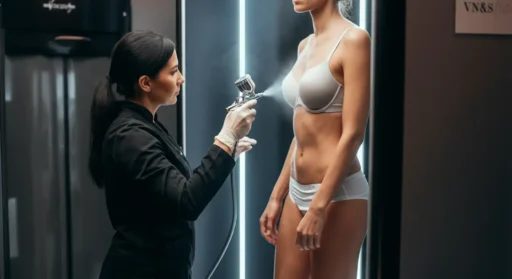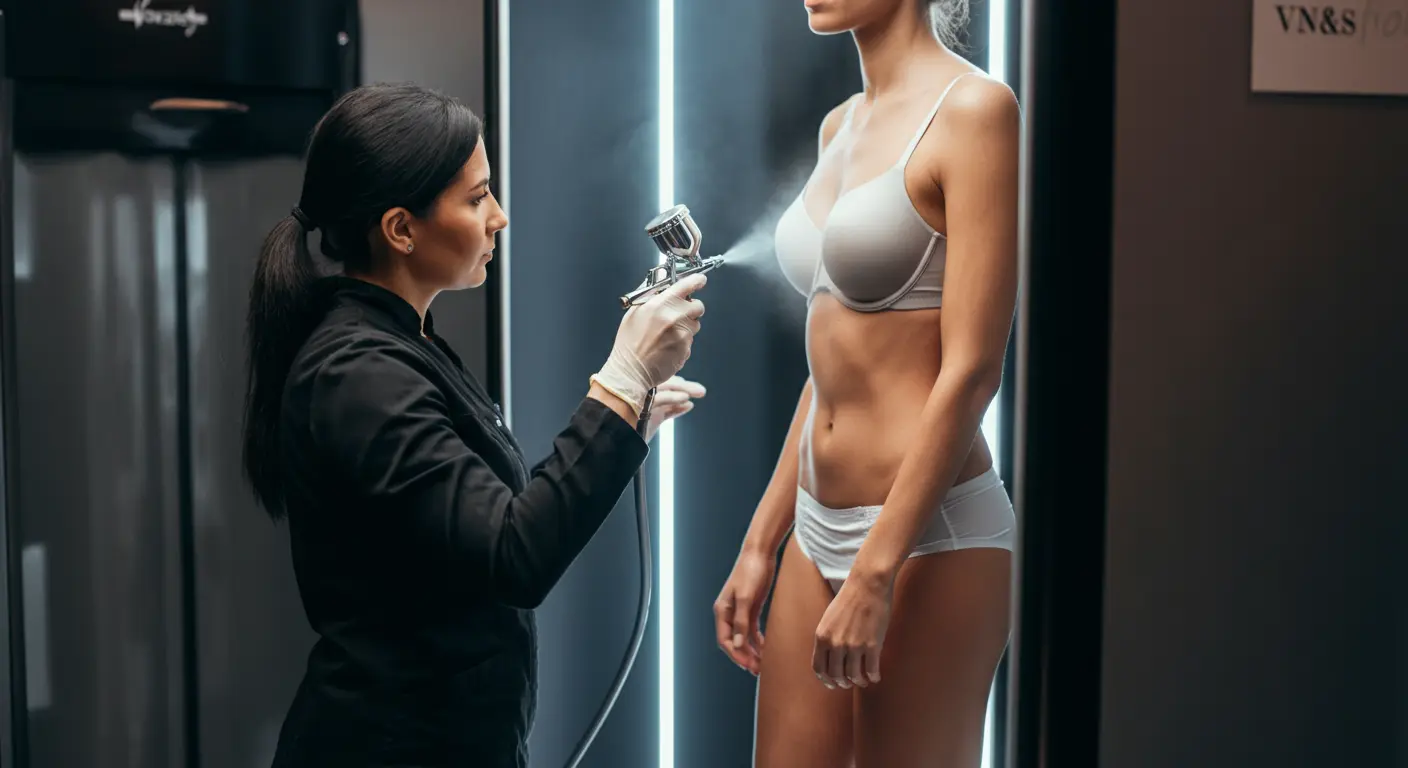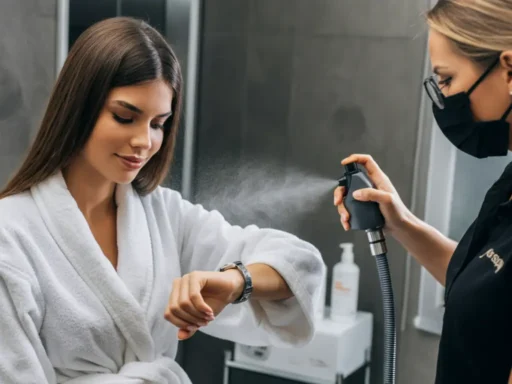Spray tanning is used by people who want to get a sun feeling but are afraid of the danger of going outside in the sun and want to acquire a high quality, sun-tanned skin. How does the spray tanning work and what makes it differ with the traditional tanning methods? Whether you’re preparing for a special event, a vacation, or simply want to test the waters, this complete guide for beginners will walk you through everything you need to know.
From understanding the science behind spray tanning to insider tips on achieving the perfect tan, you’re about to master the art and science of that flawless bronze finish!
What Exactly Is Spray Tanning?
Spray tanning offers a way to achieve a glowing tan in a fraction of the time without UV exposure. It’s a safe, sunless bronzing method that uses a fine mist containing tanning agents to color your skin. Here’s a detailed look at this tanning process:
What Makes Spray Tanning Different from Traditional Tanning
Unlike conventional tanning (via the sun or tanning beds), spray tanning removes harmful UV radiation from the equation. Instead of risking overexposure to sunlight, a spray tan uses a specially formulated solution to coat your skin, delivering instant color.
How the Process Enhances Your Skin Tone
Spray tans use a key ingredient called DHA (dihydroxyacetone)—a sugar-derived compound. DHA interacts with dead skin cells to produce the rich color that mimics a natural tan. The resulting tone lasts approximately one week, depending on aftercare and your skin’s natural exfoliation rate.
Who It’s Ideal For
Spray tanning appeals to a diverse set of people, including:
Brides-to-be who want to glow on their special day.
Fitness competitors looking to highlight their muscle definition.
Influencers and content creators, for picture-perfection.
Busy professionals needing a quick, confidence-boosting treatment before special events.
How Does Spray Tanning Work on the Skin?
To truly appreciate spray tanning, you need to explore its scientific side. Here’s a breakdown of what happens when the tanning solution meets your skin:
Role of DHA (Dihydroxyacetone)
The active ingredient in spray tanning solutions, DHA, is naturally derived from sugarcane or beets. When applied to your skin, it triggers a chemical reaction with the outer layer of dead skin cells.
The Reaction Between DHA and Amino Acids in Your Skin
When DHA meets amino acids in dead skin cells, it produces a temporary browning effect. This is why spray tans provide an instant glow without relying on the sun’s UV rays. The effect is limited to the topmost layer of your skin.
Factors That Influence How Well It Develops
Several factors can affect how your skin reacts to spray tan solution:
1
pH Levels of your skin influence absorption.
2
Skin Preparation (like exfoliating beforehand) helps achieve an even color.
3
Hydration and skin condition determine how long your tan lasts.
For more preparation tips, check out Preparing Your Skin for a Spray Tan.
Types of Spray Tans and Choosing What’s Right for You
Spray tanning isn’t a one-size-fits-all solution. Here are some variations and how to find the perfect fit:
Airbrush vs Booth Spray Tans
Airbrush Tans are applied by technicians using a handheld device for precise, even coverage.
Booth Tans use a machine to mist the solution over your body quickly, offering efficiency.
Express vs Standard Formulas
Express Tans allow you to rinse off earlier (within 1–4 hours) while continuing to develop.
Standard Tans require 8–12 hours for full development but often last longer.
Choosing Shade Levels Based on Undertone
Find a shade that complements your natural undertone:
1
Warm Undertones suit golden or bronze shades.
2
Cool Undertones pair well with olive or ashy tones.
3
Neutral Undertones can opt for versatile all-around shades.
Can You Spray Tan at Home?
Spray tanning at home can save time and money, but it has its drawbacks. Here’s what to consider:
Is It Worth Skipping the Salon?
While DIY kits are convenient, they may not provide salon-level consistency in application. Blending can be tricky!
Best Kits and Equipment for DIY
Look for popular kits like St. Tropez or MineTan, which are beginner-friendly and offer a range of custom shades.
Common At-Home Mistakes to Avoid
Overlooking exfoliation.
Using the wrong shade for your skin tone.
Skipping post-tan drying time.
Common Mistakes That Can Ruin a Spray Tan
A few simple missteps can undo your spray tan. Here’s what to avoid:
1
Using Oil-Based Products Afterward:
Oils break down the solution, causing your tan to fade faster.
2
Showering Too Soon:
Always follow the recommended waiting time for full development.
3
Wearing Tight Clothing or Sweating Early:
Friction or sweat can lead to streaking. Wear loose, dark clothing instead.
Want long-lasting results? Read Immediate Aftercare Tips for Long-Lasting Results.
Final Tips
A little knowledge goes a long way in ensuring a luminous tan! Here are final takeaways:
When to Book Your Session Before Events:
Schedule your spray tan 1–2 days ahead of time for the best results.
Why Understanding the Process Improves Results:
Knowing factors like skin preparation helps ensure an even, streak-free application.
Recap for Beginners:
Prep your skin, select an appropriate shade, and follow aftercare routines to maintain your glow.
Still unsure about where to start? Check out What Happens During a Spray Tan Session for more insights.






